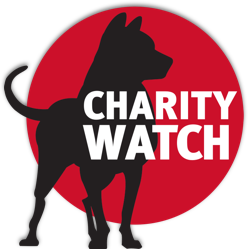Gaia-Movement Living Earth's 'Recycling' Program, Debunked!
This article was updated on August 1st, 2023, to reflect data about the charity's newly analyzed 2022 fiscal year.
CharityWatch has been keeping an eye on Gaia-Movement Living Earth (GAIA), a charity known for its ubiquitous clothing collection boxes, for many years. GAIA consistently reports low overhead and high program spending in its annual financial documents, but a closer analysis by CharityWatch reveals a different picture of how efficiently GAIA is operating.
GAIA reports spending approximately 79% of its expenses on its programs in 2022, according to its IRS tax Form 990 of the same year. CharityWatch's analysis of GAIA’s 2022 tax filing and audited financial statements, however, concludes that the charity spent only 15% of its cash expenses on programs.
Why the difference?
In short, GAIA considers the costs associated with collecting and processing donated clothing, shoes, and other goods to be recycling and environmental protection program expenses in support of its mission: "To protect the environment through reuse and recycling [of] clothes and shoes and keeping them out of the landfills…” In 2022, GAIA spent about $700,000 to collect and process these non-cash donations of clothes and other items and reported these costs as Program expenses. CharityWatch disagrees with GAIA’s reporting and reallocates these costs to Fundraising expenses. Here's why:
- The expenses a charity incurs to raise donations, whether the donations are in the form of cash or non-cash items like donated clothing, are fundraising expenses, not program expenses.
- There are many nonprofit organizations that compete with one another for clothing and other in-kind donations. If GAIA did not collect the used clothing and other goods, most of it would surely be collected by another charity, or by a for-profit company that could sell it for a profit. Therefore, it is not the case that all of the items collected by GAIA would likely end up in a landfill or otherwise pollute the environment if GAIA did not collect them.
- The most damning evidence against GAIA’s financial reporting logic is provided by the charity itself. GAIA does not distribute to needy people the vast majority of the clothing and other goods it collects to needy people—it sells them. In 2022, GAIA brought in over $1.2 million from selling these items. This proves that there is a ready market of buyers willing and able to pay large sums of money to purchase used clothing and other donated items like the types GAIA collects. It is ridiculous for this charity to assert that items worth millions of dollars would end up in a landfill if GAIA did not collect them.
According to The GAIA-Movement Living Earth Green World Action USA audit of December 31, 2022 (Note 5, Distributorship Contract):
"The Organization has an exclusive distributorship contract with Garson & Shaw, Inc. for the sale of its second-hand clothing throughout the world. The contract, which is for an indefinite period of time, can be cancelled by either party with four months notice. Under the terms of the contract, Garson & Shaw, Inc. guarantees the sale of the Organization's entire product and is entitled to a commission on all sales. The contract also provides that Garson & Shaw, Inc. may require the Organization to repurchase all products that it has in stock. The Organization has not been required to repurchase any products as of December 31, 2022."
